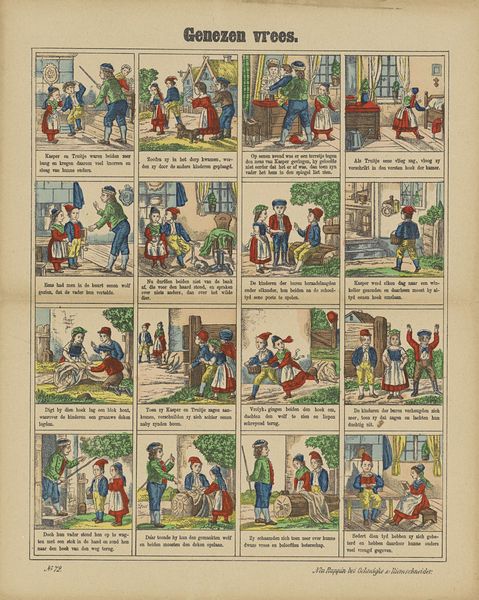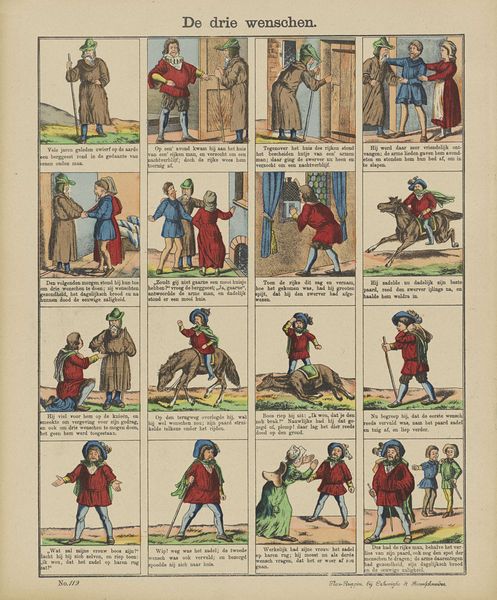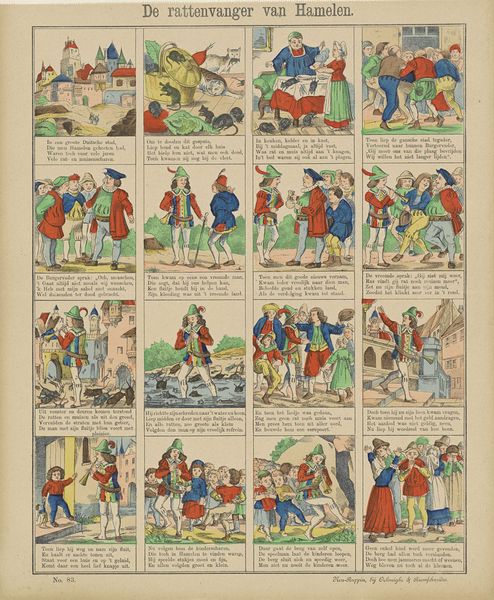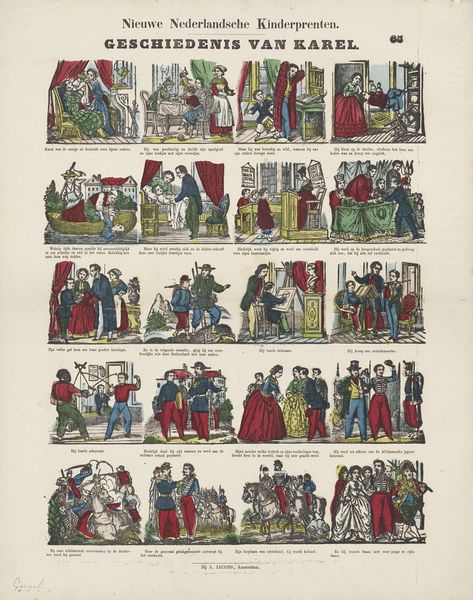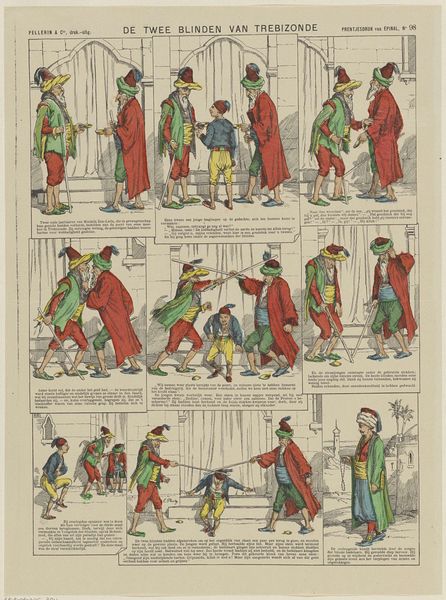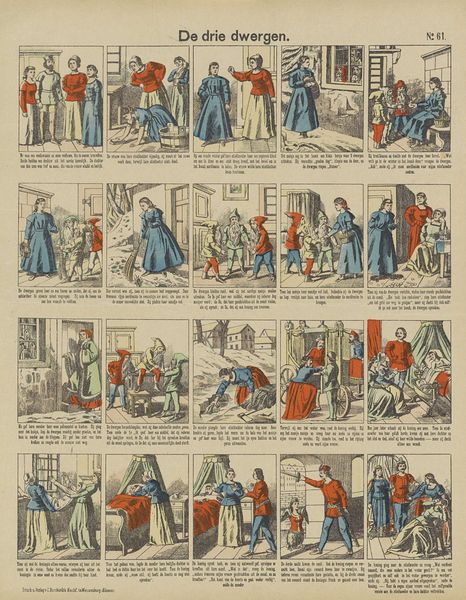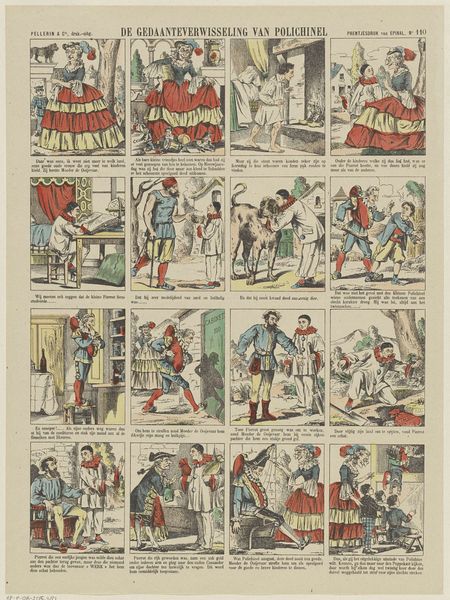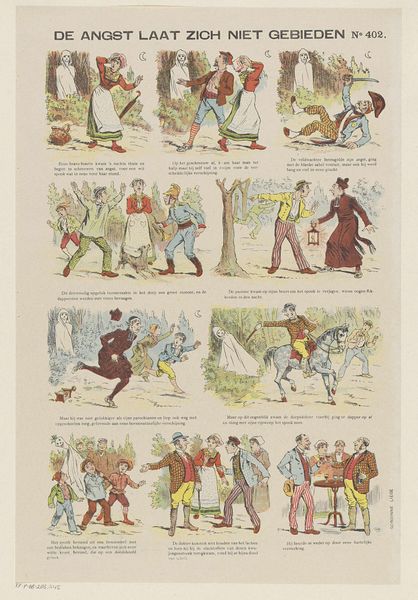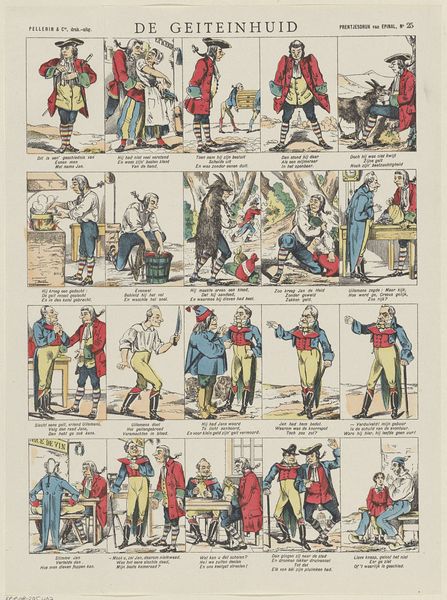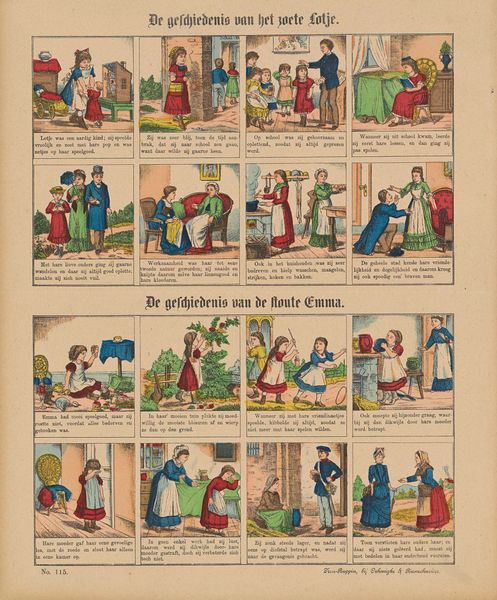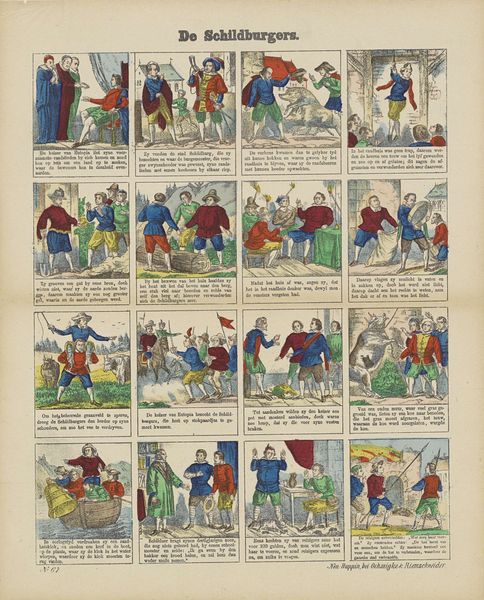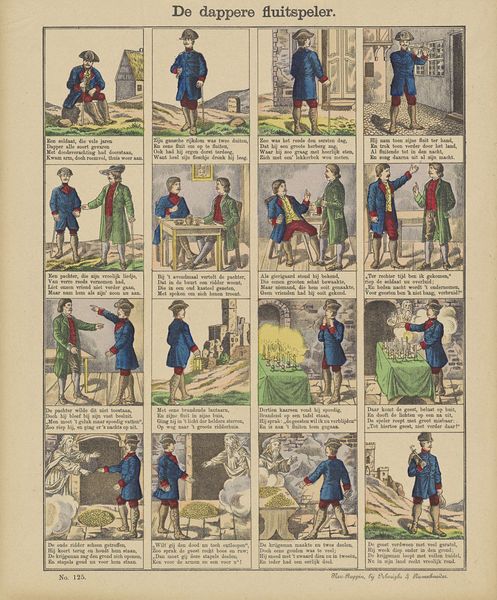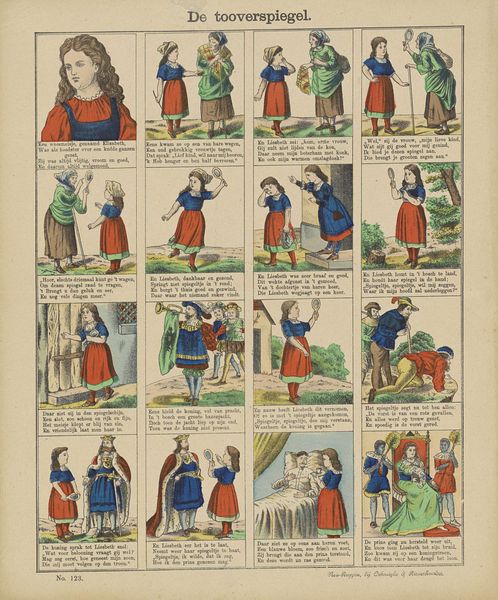
#
comic strip sketch
#
narrative-art
#
comic strip
# print
#
comic
#
genre-painting
Dimensions: height 407 mm, width 338 mm
Copyright: Rijks Museum: Open Domain
Curator: Here we have a work entitled "De drie broeders en de dwerg" from, as far as we can tell, 1828 to 1937 by Oehmigke & Riemschnieder. What jumps out at you initially? Editor: It reads like a storyboard, almost a very early comic strip. I'm immediately intrigued by its folk-tale-esque quality and the compact narratives in each frame. The colours feel surprisingly bright, especially considering its age. Curator: Yes, it’s presented in the style of narrative-art, but in a grid. It appears to depict three brothers and… a dwarf, and their story is unfolded panel by panel. Note the recurring symbols, particularly the clothing that remains relatively constant throughout each panel indicating that there may have been specific social or moral messages tied to particular garments. Editor: I wonder if the "dwarf" is not literal, but stands as a symbolic marker. He appears in the initial panels as a giver, a figure in a lower socio-economic station whose presence sets off the initial conflict for the "three brothers." This is then juxtaposed to an almost transactional arrangement between them. This could indicate the exploitation inherent in those unequal relations. Curator: Indeed, that diminutive figure certainly contrasts starkly with the brothers and that castle! The clothing choices and colours certainly contribute to an interpretation involving rigid societal hierarchies and roles. The green garb of the supposed dwarf in particular evokes nature, earthiness...a lower station in the cosmic order. Editor: I’d want to delve further into the possible historical connotations of this image. How did images like this perpetuate certain stereotypes? And how might that shape our understanding of class and social structures? I find myself especially drawn to that ambiguous moment with the Queen, there seems to be a pivotal plot point relating to gender there, or a gendered imbalance of power at least. Curator: Absolutely, this type of detailed print begs closer study of its symbolism to further understand the complex social dynamics it seeks to portray, either intentionally or subconsciously. Editor: Precisely. A compelling piece indeed—its potential layers of social commentary urge us to look at its legacy.
Comments
No comments
Be the first to comment and join the conversation on the ultimate creative platform.
